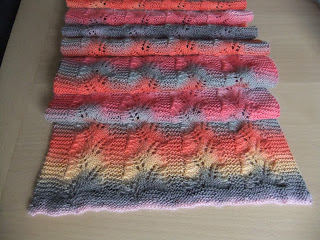Just in case you have no idea how WW does stuff, here’s the very quick synopsis: Everything has a points value (now called points plus). You earn points by working out, and you use points by eating. You have a certain number of points per day based on your age, weight, level of activity, etc., and you have some bonus points you can use whenever you want during the week.
In other words, this is a plan created specifically for people like me who love lists, rules, and clearly set-out organizational systems. If you use the online system, you also get an image of a bouncing star when you meet a goal. I’ve been known to leave the window up when I get a bouncing star so I can watch it all day and feel proud of myself.
The new plan is smarter, I think. The major change is that WW encourages users to eat more fresh fruits and vegetables and less processed foods. It does this in two distinct ways:
1. Nearly all fruits and vegetables are “0 points plus” foods. (Think “free” food if you’re used to the diabetic meal plan.) Whoo hoo! Bring on the bananas!
2.
The points plus value for most other foods has increased. So, the frozen meal I ate at lunch used to be 4 points, and now it’s 5. Even though I have more points to use each day under the new plan, I’m steered away from things I used to eat all the time (
coughVitatopscough) because they’re higher in points than they used to be.
This plan works for me because it addresses (some of) my neuroses. I have convinced myself that the outcome is directly related to how closely I follow the rules, that there is a direct correlation between action and effect. It’s my favorite kind of plan.
Then I made
quinoa-stuffed peppers. Using the nutritional information from
VT’s website, the points plus value was 7. After dinner, I entered everything I actually put into the recipe, which wasn’t exactly what was published by VT, into the recipe builder in Weight Watchers and set it for 6 servings instead of 8.
For each ingredient I entered, the point plus value was listed beside it: 12 points for ¾ c. uncooked quinoa, 7 points for 1 ½ c. low fat shredded cheese, 0 points for garlic, diced tomatoes, carrots, bell peppers, etc. The total point value once I added up all those individual entries was 27.
27 / 6 = 4.5
That seemed low. At the bottom of the recipe page on WW’s site, the points plus value for the recipe was listed as 61.
61 / 6 = 10.2
Below that line is a link, “Is this total not what you expected?” When I clicked it, a friendly yellow box came up to tell me that the recipe builder bases its calculations off of nutritional information of the recipe, not the points value of each individual item.
I badly need consistent rules. I need to believe that the goals I have for my health are within my power to achieve, and for my specific brand of crazy that means that I have to have rules that never, ever change.
There’s a lengthy discussion about this on the Weight Watcher website, and I tried hard to believe the rationale they offer.
But I don’t.
I don't find their explanation compelling. If a carrot is 0 points, then it’s 0 points regardless of whether it’s in a recipe or eaten by itself.
Someone suggested I don’t use the recipe builder and that instead I just add up the ingredients mentally and stuff in that number.
Maybe that would work. Or maybe it won’t and I’ll gain all the weight back and I’ll get Type 2 diabetes and I’ll die.
‘Cause that’s how my brain works. Once we get into shades of gray, I tend to shoot straight to the blackest gray I can find.
I don't know what to do with this. I keep looking for a positive way to end the post, but I haven't found it.
Well, there's the fact that I live such a privileged life in my developed country that I can spare energy to freak out about a change in my weight loss plan. That's certainly true. But that really only makes me feel like a jerk, so that's not especially helpful.
If anyone has any suggestions, I'm open.




































